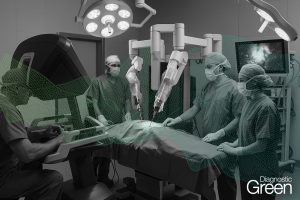Purpose: To further enhance understanding of the expanded clinical spectrum of unilateral retinal pigment epithelium dysgenesis (URPED) via numerous imaging modalities including novel markers of highly detailed indocyanine green angiography (ICGA) features.
Results: URPED in this patient is expressed as a solitary, flat and pigmented lesion in the posterior pole with RPE hyperplasia and atrophic changes. An epiretinal membrane (ERM) causing fine, tortuous retinal vessels and retinal folds was observed. Green and blue excitation light fundus autofluorescence showed a biphasic appearance with hypoautofluorescent rounded lesions and a reticular configuration of normal RPE. Fundus fluorescein angiography revealed diffuse hypofluorescence and hyperfluorescent wisps of leakage in late-phases. Early-phase of ICGA evidenced diffuse hypocianescence and a delineated hypercianescent scalloped margin appeared in the late-phase, together with focal hypocianescent spots. SD-OCT demonstrated irregularity of the RPE with fibrosis and hyperplastic changes combined with atrophic areas. Flat RPE detachments intermingled with healthy-appearing RPE were also observed together with thinning of the outer retina. ERM with thickening and disorganization involving the whole retina was present. Optical coherence tomography angiography (14 × 14 mm) revealed an oval shape foveal avascular zone and vascular anomalies such as tortuosity and looping.
Conclusion: URPED is an extremely rare clinical entity with only a few cases reported. In this case the almost pathognomonic differential features of URPED were best appreciated with ICGA imaging. To our knowledge, this is the first reported case of URPED with these abnormal findings on ICGA meaning it could be part of the spectrum of the disease.




